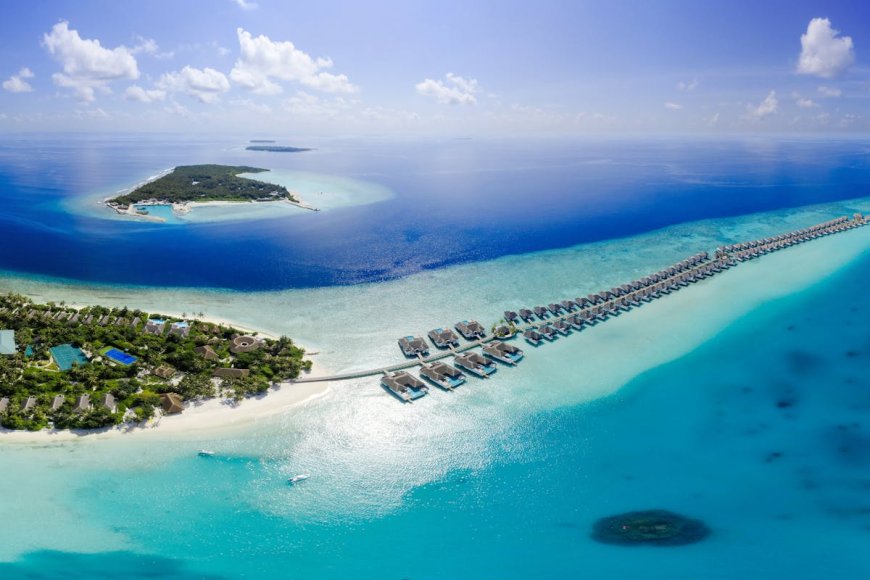Everyone Thought the Maldives Were Only for Billionaires—Here’s Why Americans Are Booking in 2025
In this article, we’re pulling back the curtain on why the Maldives is blowing up with U.S. travelers in 2025, how regular people are affording it, and the secret shifts in travel that made it all possible.

Think the Maldives are just for honeymooners and Instagram models with private jets? Think again.
What used to be a bucket-list dream for the 1% has suddenly become the go-to international getaway for middle-class Americans—yes, even the ones still paying off student loans or living paycheck to paycheck. We’re talking teacher-salary folks, gig workers, and even that barista at your favorite coffee spot. They’re packing up and flying 9,000 miles across the ocean—and not because they won the lottery.
So what’s going on?
The Uncomfortable Truth Nobody’s Discussing
For decades, the Maldives were painted as this unreachable paradise—like Bora Bora’s cooler cousin. Overwater villas? Sure. Crystal clear lagoons? Absolutely. But for $12,000 a week? Yeah, not happening.
But here’s the twist:
That image is outdated. What was an exclusive playground is now surprisingly accessible—thanks to budget travel trends, aggressive resort marketing, and a flood of TikTok creators spilling the tea on how to hack paradise for under $2,000.
Let’s break down why this shift is real—and why it’s only getting bigger.
Trend 1: Flights Are Cheaper Than Ever—If You Know Where to Look
Ask anyone who’s traveled in 2025 and they’ll tell you—international airfare is a whole different ballgame now. Dynamic pricing, mileage deals, and alliance networks like Oneworld and SkyTeam are making long-haul travel way more affordable.
Smart American travelers are catching on:
- Flights from New York to Malé are going for $700–$900 round trip, especially if you’re flexible with stopovers.
- From Los Angeles or Dallas, fares hover under $1,000 with airlines like Qatar Airways or Turkish Airlines (which, honestly, serve better food than U.S. carriers anyway).
What used to be the biggest barrier to reaching the Maldives—distance—is now just a long nap and a Netflix binge away.
Trend 2: Guesthouses Are Crushing the Overwater Villa Monopoly
Let’s talk money. Everyone sees those dreamy $1,000-a-night villas and assumes that’s all there is in the Maldives.
Locally-owned guesthouses have exploded in popularity—and they’re dirt cheap.
We're talking:
- $60–$100 per night
- Free breakfast
- Just steps from that same blue lagoon you’ve seen on luxury hotel websites
These guesthouses are on “local islands” (as opposed to resort islands), and here’s the cool part—you actually get to experience real Maldivian culture. Fresh fish, traditional dhoni boats, and that laid-back island life vibe? It’s all there.
Trend 3: Speedboats and Ferries Replaced Pricey Seaplanes
Another reason people used to avoid the Maldives? Those wild seaplane transfers. You’d land at the airport, only to spend another $400–$600 per person just to get to your hotel.
Yeah, no thanks.
But now? Public speedboats and ferries have opened up travel between islands—for under $50. You can get from Malé to Maafushi, Thulusdhoo, or Dhigurah in a couple hours, and it’s honestly part of the fun. Imagine a speedboat cutting across turquoise water at sunset—it’s not exactly torture.
Trend 4: TikTok Travel Hacks Changed the Game
Let’s be real—half the reason the Maldives blew up with American travelers is social media. TikTok in particular has become a cheat sheet for budget travel, and the Maldives is trending hard.
You’ll see clips like:
“How I Spent a Week in the Maldives for $1,200—Flights, Food, and Hotel Included!”
And the best part? It’s not a scam. People are doing it. They're:
- Booking flights on Hopper or Skyscanner alerts
- Staying in guesthouses with free meals
- Taking local transport
- Snorkeling for free (because, hello, the reef is literally everywhere)
So yeah, the travel elite don’t exactly want you knowing this. But the cat’s outta the bag.
Trend 5: Americans Are Ditching Europe for Exotic Islands
Let’s not ignore the obvious—Europe’s gotten kinda expensive. Between the weak dollar-to-euro exchange rate, tourist taxes, and sky-high hotel costs, a week in Paris or Rome now costs as much as a trip to Southeast Asia.
And for Americans craving something totally different, the Maldives hit all the sweet spots:
- Tropical paradise?
- Affordable on a budget?
- Exotic but still safe?
The vibe is completely different than anywhere in Europe. No cathedrals, no crowded metros, no overpriced coffee shops. Just ocean, sand, stars, and silence. Kinda makes you rethink what a “dream vacation” looks like, doesn’t it?
Bonus: Remote Work + Longer Stays = Bigger Travel Shifts
One word: workcations.
Since remote work became more normalized (thanks, pandemic), a growing number of Americans are saying: “Why not work from the Maldives for two weeks?”
And yes, the Wi-Fi is actually decent—especially in areas like Thulusdhoo and Ukulhas. Some guesthouses even offer special “remote work” packages with meal plans and workspace setups.
Quick Recap: What’s Really Driving This Trend?
| Factor | What Changed |
|---|---|
| Flights | Now affordable from U.S. hubs |
| Lodging | Budget guesthouses made islands accessible |
| Transfers | Speedboats killed overpriced seaplanes |
| Social Media | TikTok exposed budget travel secrets |
| Remote Work | Long stays became doable—and popular |
The Maldives aren’t just for the rich anymore. They're for savvy travelers. For young couples, solo backpackers, and even families with two kids and a carry-on. The barriers that once made this paradise feel untouchable have been quietly breaking down—and Americans are catching on fast.
So next time someone tells you, “Oh, I wish I could afford the Maldives,” maybe send them this article. Or better yet, invite them to come with you.
The question is… will you keep dreaming about paradise—or finally book the flight?







